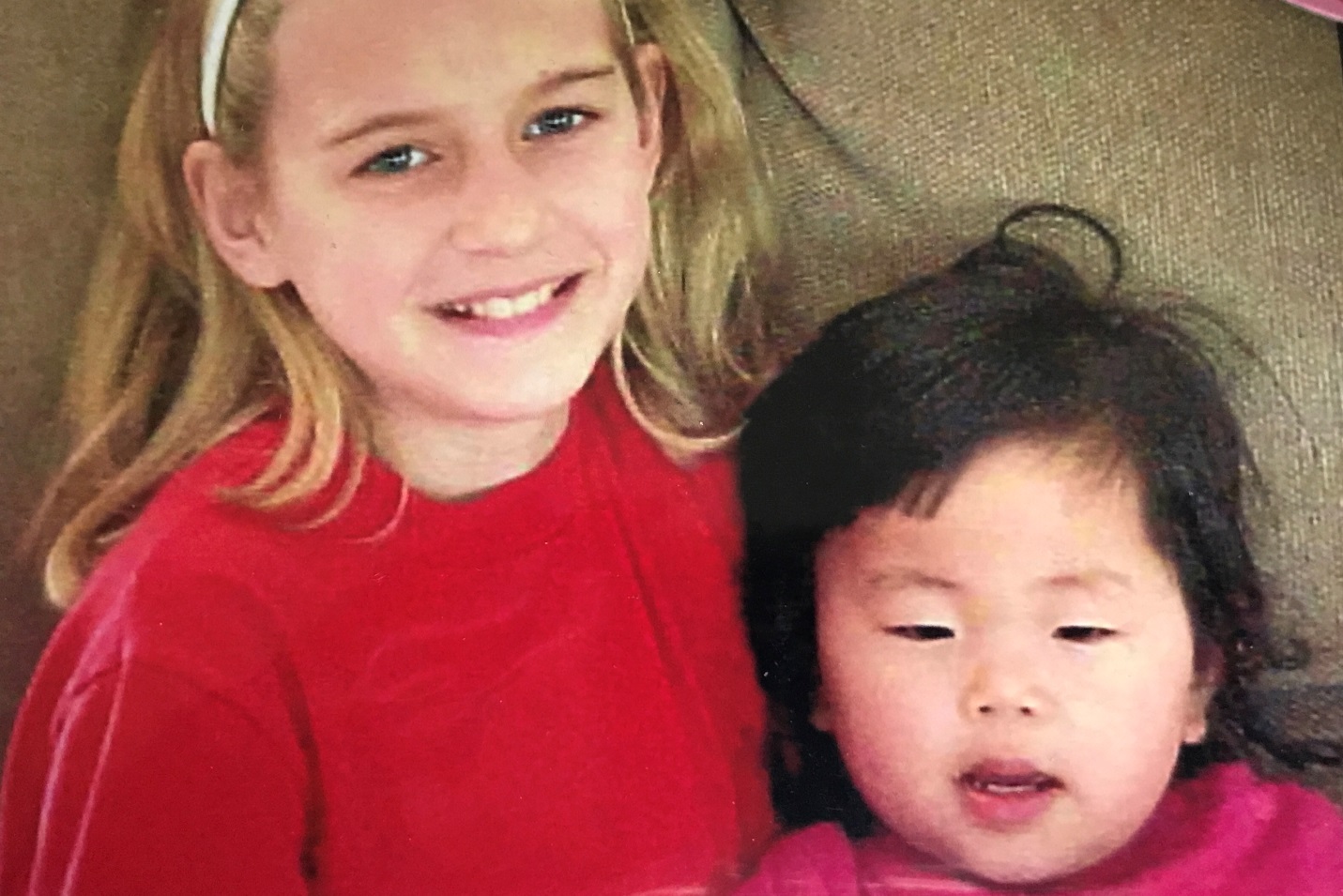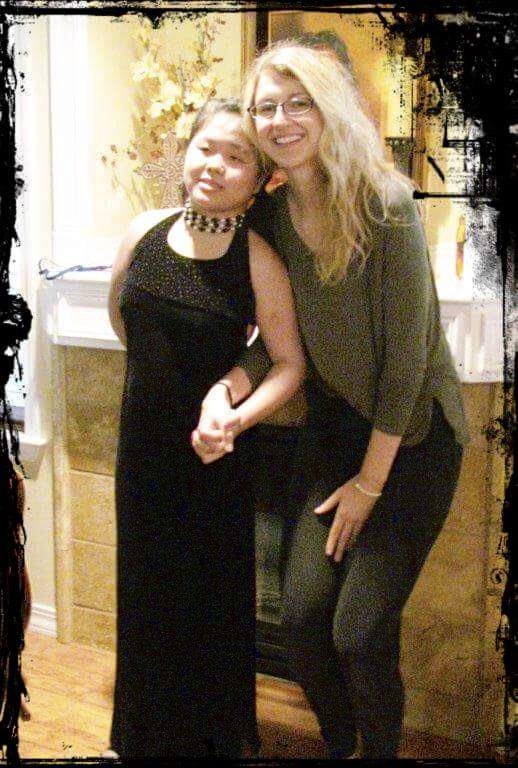 |
 |
| Emery (at left in top photo and at right on bottom) and Ahna, then and today. |
“We are all learning and growing, always. Kids are the best teachers and caregivers are an important part of the team. We are all in it together.”
How did you decide on a career in pediatric speech therapy?
I grew up with a younger girl, Ahna, who has autism, significant developmental delays, impulsive behaviors, suspected autoimmune diseases, self-injurious episodes, and other challenges. We have always been close, like sisters, and love doing things together. Being close with her family, I felt the heartache of not knowing how to help her communicate when she would unexpectedly start crying quietly or attempting to hurt her body in various ways. While I got to be there for her therapy sessions, doctor visits, and hospitalizations growing up, her family taught me the most about trying to help a loved one understand, play, love, cope with, and communicate in the world the same way most of us do – together. Intervening early and having a strong support system made all of us feel more hopeful, and I knew I wanted to help others feel confident that there is always, always hope.
What do you love most about being an SLP (speech-language pathologist) and working with children?
Every child is rapidly learning about themselves and the world, and therefore each child has unique things to teach us. When we pause in our busy lives to pay close attention to these lessons, we can figure out how to help them express what they want, need, and love. There are so many “baby steps” involved in communicating, so there are a lot of opportunities for celebrating – with lots and lots of cheering!
Give us an example of how you’ve collaborated with therapists from other disciplines to treat a child.
I had an opportunity to work with two occupational therapists, Caitlin and Sara, for a co-treat session with a child who always had great amounts of energy and various sensory preferences. One priority for this child’s family was for him to be calm enough to notice and engage in play with other people. We worked together with his family to establish predictable routines involving sensory play and strategies to help provide the physical input his body needed in order to attend to the upcoming interactive game or structured activity. We noticed continuous improvement in his sustained attention, calmness, readiness to learn, and his ways of communicating. It was exciting to see his parents feel more confident about helping their child feel calm enough to notice other things in his environment that he eventually became interested in, expanding his learning opportunities.
What do you love most about CTC?
Every single person at CTC is passionate about supporting others, building confidence in children and their families, and spreading love wherever they go.
If you were going to a deserted island (with kids who needed therapy) and you could only bring one thing to use for therapy, what would you bring?
A deflated balloon! Blow it up, let it go, or tie it off loosely! A balloon can create highly motivating opportunities to initiate and respond to joint attention if you let it loose, as well as for engaging in reciprocal play by bouncing it back-and-forth, using for a hide-and-seek game, and turning into a face for pretend play. If you could find wet seaweed, sticking it to the balloon and creating a body-part identification task would be great. That balloon can become anything for pretend and symbolic play. It can also be a great “first/then” reinforcement tool [helping children understand sequence]. If nothing else, a flying balloon will probably earn a laugh!
How do you like to spend time outside work?
Hanging out with family, friends and animals, hiking, yoga, exploring new places, learning about nutrition and plant-based lifestyle, playing music, and painting.